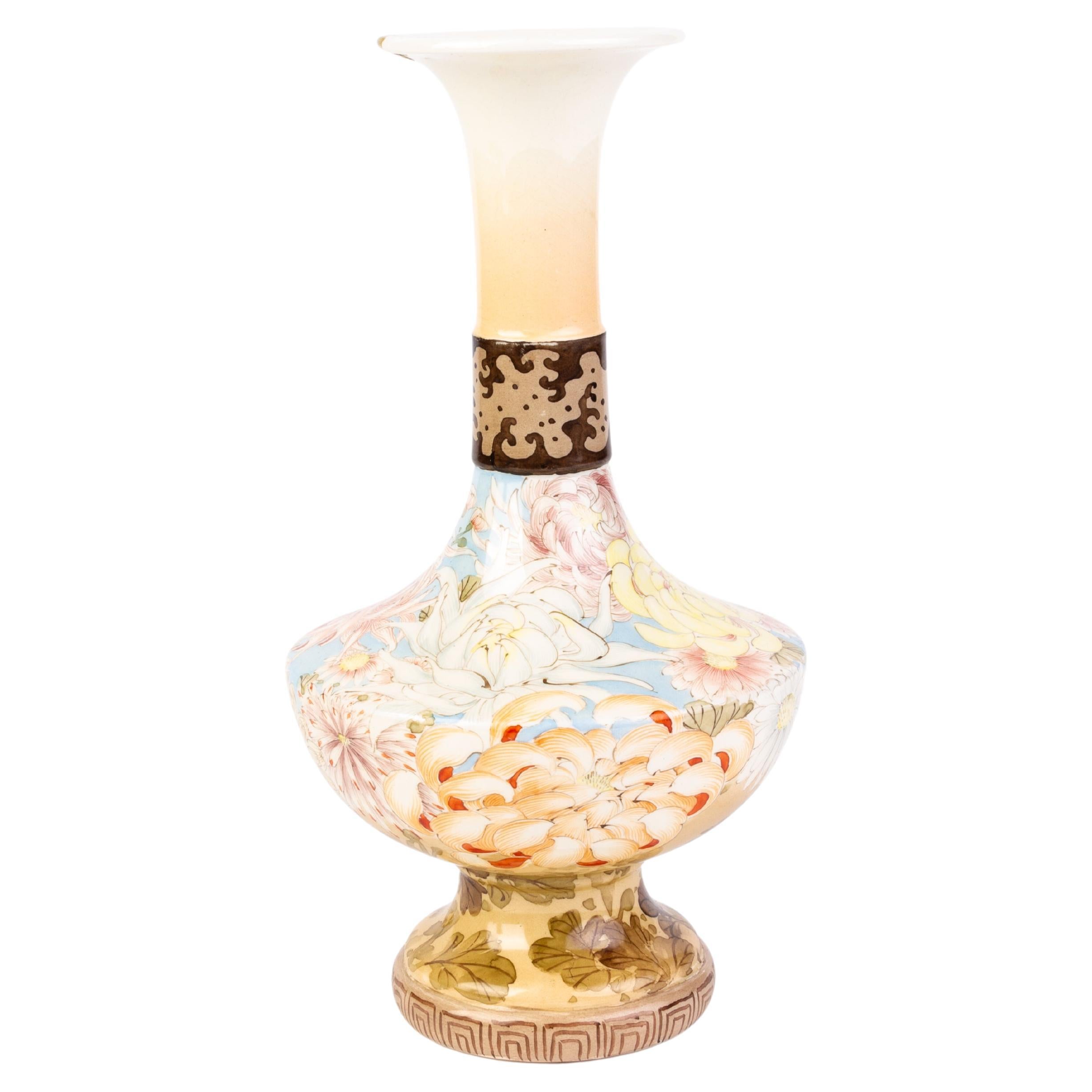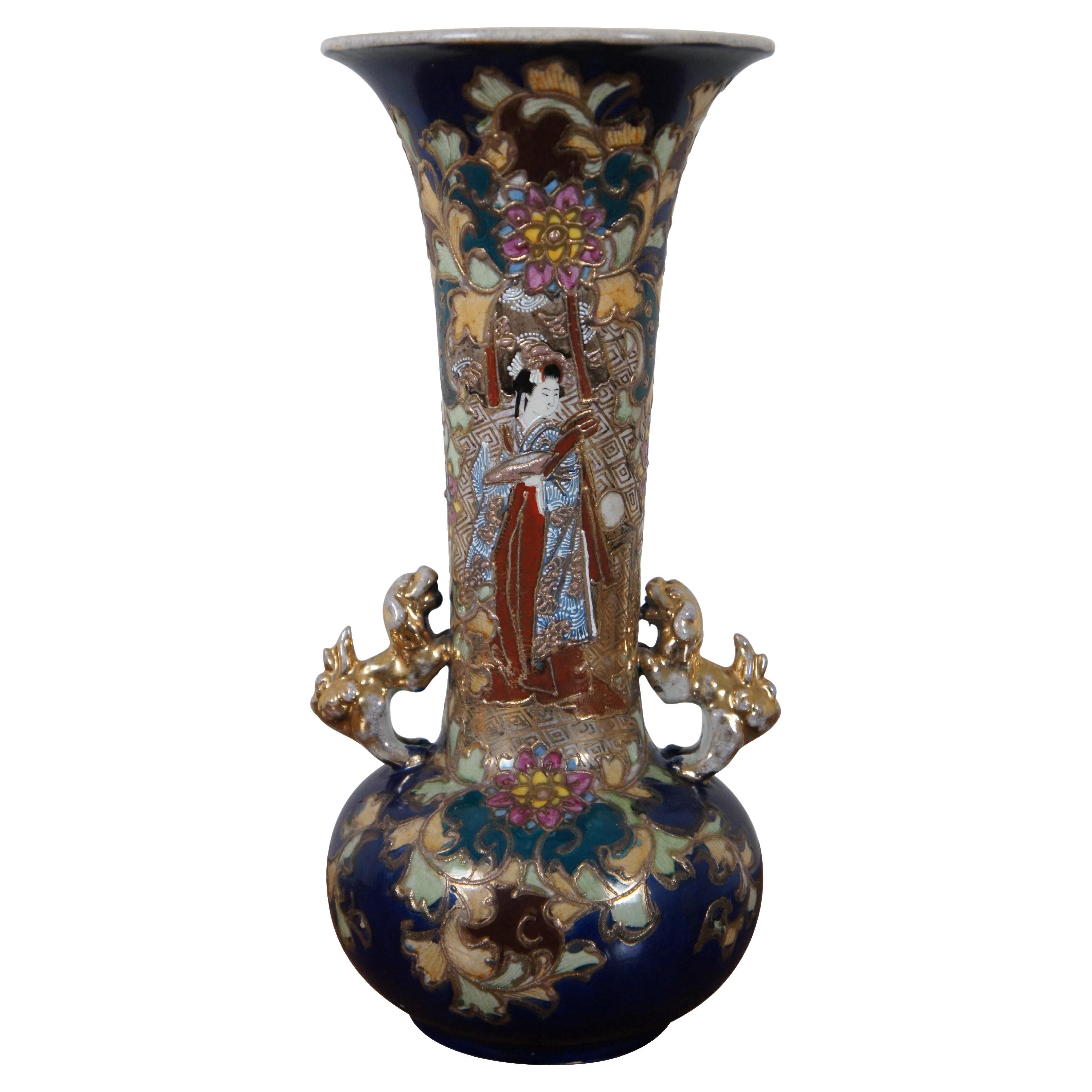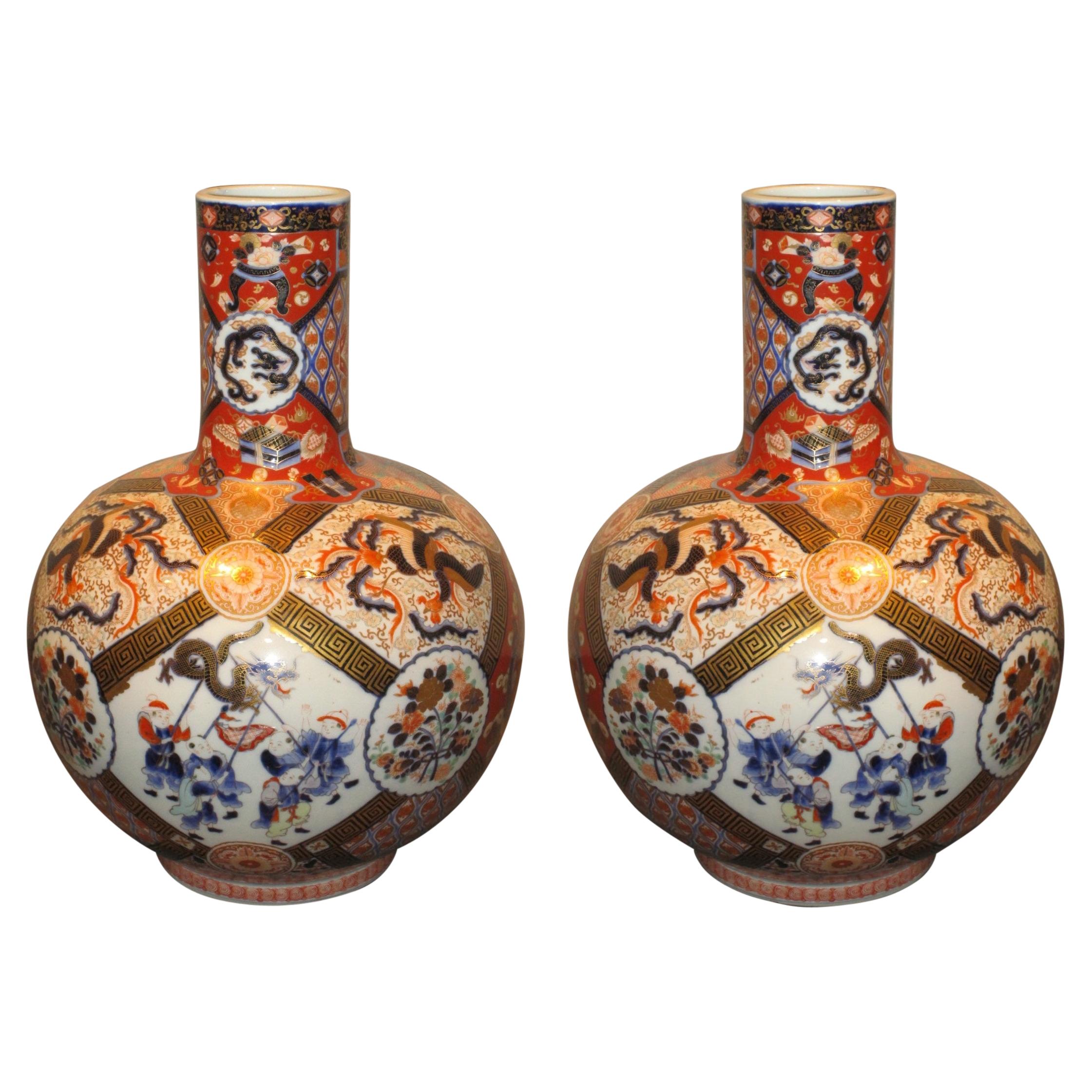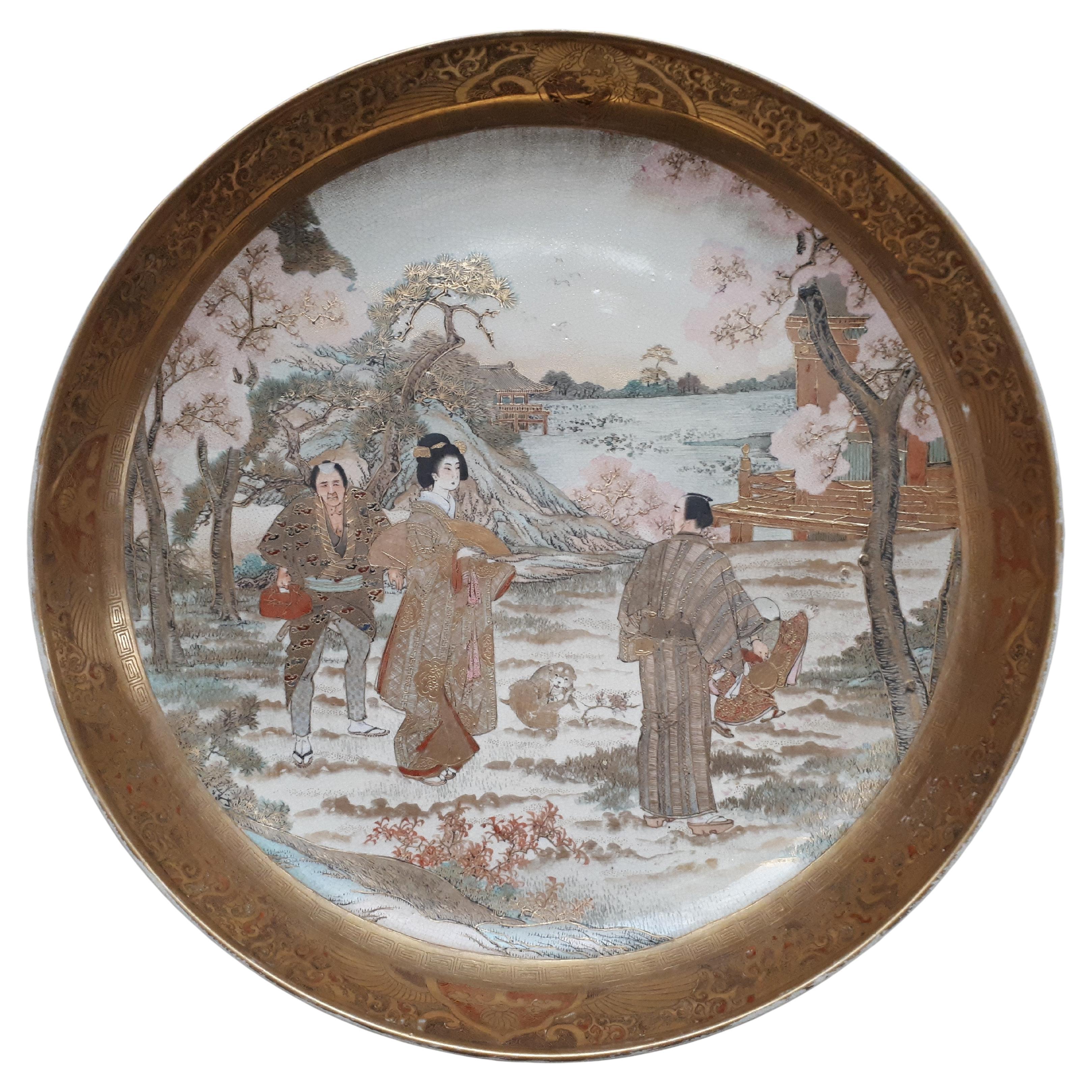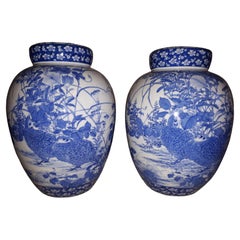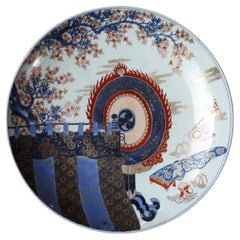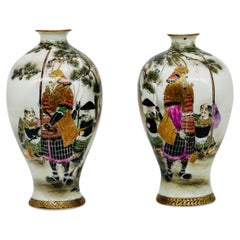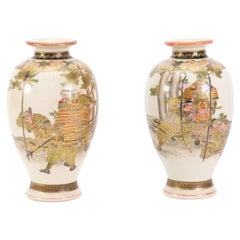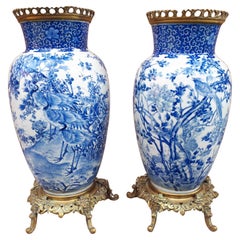
Pair Of Seto Porcelain Vases, Bronze Mounts, Japan Meiji Era
View Similar Items
Want more images or videos?
Request additional images or videos from the seller
1 of 15
Pair Of Seto Porcelain Vases, Bronze Mounts, Japan Meiji Era
About the Item
- Dimensions:Height: 16.15 in (41 cm)Diameter: 7.09 in (18 cm)
- Sold As:Set of 2
- Materials and Techniques:Porcelain,Enameled
- Place of Origin:
- Period:
- Date of Manufacture:1868-1912
- Condition:
- Seller Location:Saverne, FR
- Reference Number:1stDibs: LU8536236890422
About the Seller
5.0
Vetted Seller
These experienced sellers undergo a comprehensive evaluation by our team of in-house experts.
1stDibs seller since 2023
6 sales on 1stDibs
Typical response time: 2 hours
More From This SellerView All
- Pair Of Seto Porcelain Covered Vases, Japan Meiji EraLocated in Saverne, Grand EstMagnificent pair of porcelain vases with a rich underglaze blue decoration of a couple of partridges among the vegetation. A minimal defect on each interior lid in the shape of a sty...Category
Antique Late 19th Century Japanese Meiji Ceramics
MaterialsPorcelain
- Large Japanese Arita (Imari) Porcelain Dish, Japan Meiji EraLocated in Saverne, Grand EstLarge Arita porcelain dish, with polychrome decoration and gilt highlights of standards placed under a maple tree. Japan, late 19th century.Category
Antique Late 19th Century Japanese Ceramics
MaterialsPorcelain
- Japanese Satsuma Earthenware Dish, Meiji Era JapanLocated in Saverne, Grand EstExceptional Satsuma earthenware dish of incredible finesse. A work of art which, without a doubt, required several dozen hours of meticulous work. But what a result !!! Japan around ...Category
Early 20th Century Japanese Ceramics
MaterialsEarthenware
- Large Japanese Satsuma Earthenware Dish, Meiji Era JapanLocated in Saverne, Grand EstLarge Satsuma earthenware dish decorated with "one hundred boys". Signed on the reverse. Japan around 1900Category
Early 20th Century Japanese Meiji Ceramics
MaterialsEarthenware
- Pair of Large Japanese Arita 'Imari' Porcelain Vases, Japan NineteenthLocated in Saverne, Grand EstExtraordinary pair of Arita porcelain vases with blue, coral and polychrome decoration, with gold highlights, of court scenes and floral landscapes. A restored cover and a chip on a ...Category
Antique Late 19th Century Japanese Ceramics
MaterialsPorcelain
- Japanese Kutani Porcelain Vase, Japan NineteenthLocated in Saverne, Grand EstLarge Kutani porcelain vase with polychrome decoration with gilt highlights, of shishes in reserves on a foliage background. Japan, second half of the 19th century.Category
Antique 19th Century Japanese Ceramics
MaterialsPorcelain
You May Also LikeView All
- A exceptional pair of Japanese Arita Porcelain Vases. Meiji Era.Kutani, SatsumaLocated in London, GBA Rare and exceptional Pair of Japanese Arita vases; each one decorated with a Daimyo wearing Do Maru beside two Ashigaru. Early Meiji period/Late Edo 15 cm high; In excelle...Category
Antique Early 19th Century Japanese Ceramics
MaterialsPorcelain, Ceramic
- Japanese Porcelain Meiji VaseLocated in Nottingham, GBFrom a private collection. Free international shipping.Category
Antique Late 19th Century Ceramics
MaterialsPorcelain
- A Fine Pair of Japanese Antique Satsuma Vases Signed by Choshuzan 長州山. Meiji EraLocated in London, GBA magnificent Pair of Japanese Satsuma vases signed by Choshuzan 長州山. Late Meiji period. of a baluster form , finely painted in Satsuma enamels enhanced with gold paint,decorate...Category
Antique Late 19th Century Japanese Ceramics
MaterialsCeramic, Porcelain
- Japanese Meiji Cloisonne Pair of VasesBy Ando JubeiLocated in Gainesville, FLJapanese Meiji cloisonne pair of very fine and detailed vases. Maker's mark on the bottom.Category
Antique Late 19th Century Japanese Japonisme Ceramics
MaterialsEnamel
- Antique Japanese Meiji Era Porcelain Satsuma Figural Kutani Vase Fu Dogs GeishaLocated in Dayton, OH"Late Meiji era Kutani vase, circa 1903. A beautiful porcelain blue ground centered by an intricate Geisha flanked by gold figural Foo Dog handles. Features a floral and foliat motif throughout. Signed along the base. Kutani ware, Japanese porcelain made in Kaga province (now in Ishikawa prefecture). The name “Old Kutani” refers to porcelain decorated with heavily applied overglaze enamels and produced in the Kaga mountain village of Kutani. The powerful Maeda family had established a kiln there by 1656. The clay bodies used were gray and coarse-grained. On most pieces—dishes and bowls were especially common—a white or blue-white matte glaze was decorated in dark, restrained colours, initially greens, yellows, and some reds, and later purples and dark blues. Some items had cobalt blue decoration under a white glaze. The most noted Old Kutani pieces are “Green Kutani,” in which most of the surface is covered in a green or blue-green glaze to which one or two colours have been added (or the glaze is applied evenly over a design executed in black). The bold designs of Kutani ware drew freely from Chinese ceramics, paintings, and textiles. They are renowned for their rich pictorial ornament executed in lively, intense lines. Owing to local financial problems and difficulties in obtaining the necessary pigments, the Kutani kiln was abandoned some time in the Genroku period (1688–1704). Ceramics production in Kaga enjoyed a renaissance early in the 19th century, however, including the establishment of another kiln at Kutani in the 1820s. In addition to a revival of the styles of Old Kutani ware, there arose a style using gold on a coral-red ground, which was perfected during another spate of activity that began in the 1860s. Technical advances were made and Western-style pigments were adopted, and by the 1890s modern Kutani...Category
Antique Early 1900s Meiji Vases
MaterialsPorcelain
- Japanese Imari Arita Porcelain Vase MeijiLocated in Nottingham, GBFrom a private collection. Free international shipping.Category
Antique Late 19th Century Ceramics
MaterialsPorcelain
Recently Viewed
View AllMore Ways To Browse
Seto Porcelain
Japanese Seto
Seto Vase
Chenghua Chicken Cups
Kitaoji Rosanjin
Satsuma Wisteria
Majapahit Terracotta
Chinese Cong Vase
Chinese Mud Figures
Mashiko Yaki
Imari Dragon Bowl
Imari Porcelain On Sale
Japanese Tree Bark Cloisonne
Jian Ware
Shiwan Teapot
Chinese Longquan Style Celadon Vase
Hoya Vase
Imari Stick Stand


